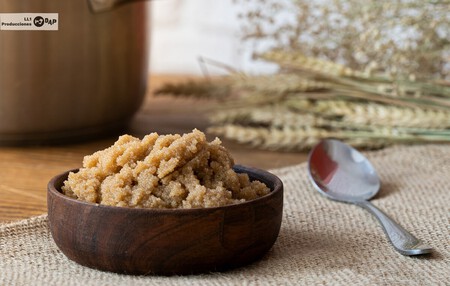Surely you have heard of quinoa, amaranth and also the term pseudocereals the latter being still little known and very confused with cereals. Therefore, we tell you what they are the nutritional properties of these foods and how to add them to your diet.
What is a pseudocereal
As their name indicates, pseudoceerales are are grain-like foods but it’s not really about pimples such as rice, wheat or corn, but are broad-leaved plants that differ from grasses.
In nutritional terms, pseudocereals They are excellent sources of complex carbohydrates and fiber. especially if they are unrefined or excessively processed specimens.
However, we must recognize that in them highlights its contribution of vegetable proteins as well as minerals such as iron, potassium and vegetable calcium, and vitamins such as folic acid, over cereals.
If we had to describe them Due to their nutrients, we would say that pseudocereals are more similar to legumes. than to cereals; However, due to their usefulness in the kitchen, they are more similar to the latter, being very versatile and in all cases, without gluten.
Some of the most popular pseudocereals
Although we find a variety of pseudocereals suitable for human consumption, some specimens are more popular than others; because We briefly describe some of them.:
Quinoa: the most recognized option

The quinoa It is one of the most fashionable and popular pseudocereals in recent times, currently considered a superfood due to its lots of protein and complex hydrates, as well as in fiber with a minimum contribution of omega 3 and omega 6 fatty acids.
On the other hand, quinoa is an excellent option for celiacs, accessible and as versatile as rice, It is also very easy to cook and offers a low glycemic index.
It is ideal for athletes, diabetics or people who seek to control blood lipid levels is as well as, for those who want to prevent constipation.
Amaranth, another hyperproteic alternative

Amaranth is like quinoa, native to Latin America and is a pseudocereal source of fiber and protein in high proportions.
It is cooked as easily as quinoa and is as versatile as rice and other cereals, being able to use it in both sweet and savory dishes to obtain with it, a preparation very satiating and concentrated quality nutrients.
Kañiwa, a little-known pseudocereal

The kañiwa is a pseudocereal native to the Andean region of South America and belongs to the same family as quinoaIn fact, its grain is very similar to black quinoa, but smaller.
It turns out a excellent source of vegetable protein, fiber and complex carbohydrates, as well as flavonoids with an antioxidant effect on the body.
Buckwheat or buckwheat, the most similar option to a cereal

The buckwheat It has nothing to do with wheat, although its name is confusing, since it is a pseudocereal very similar to other cereals that is usually used in the form of flour to make, for example, gluten-free bread.
It is, like other pseudocereals, an excellent source of vegetable protein and fiber, as well as valuable vitamins and minerals for the organism.
How to add pseudocereals to our usual table
As we have said, pseudocereals are very similar to cereals and we can use them as such in the kitchen, since due to their neutral flavor and versatility They are suitable for sweet and savory dishes.
Their great advantage is that they represent Gluten-free and celiac-friendly alternatives that can easily enrich our dishes, to a greater extent than cereals.
Most of the pseudocereals, especially quinoa, amaranth and kañiwa, require washing prior to cooking rubbing under running water and rinsing the grains several times, until obtaining clean water after washing.

This process results fundamental to eliminate saponins a small layer that covers each grain and provides a bitter taste to food as well as has an antinutrient effect on our body.
Therefore, if we want to make the most of the properties, washing prior to cooking, which approximately lasts between 10 and 20 minutes in boiling water, it is essential.
We can use the pseudocereals in various dishes and prepare from salads to spoon dishes ideal for this season or, sweet preparations for breakfast or snack.
Now you know what they are the properties of pseudocereals and how to add them to your diet to make the most of its nutrients and benefits.
In DAP | How to cook quinoa in the microwave: easy, fast and convenient recipe to achieve the perfect texture
Image | Cover photo: Roosa Kulju, photo 1: DAP, photo 2: DAP, photo 3: Tim h, photo 4: Natalia Gusakova


